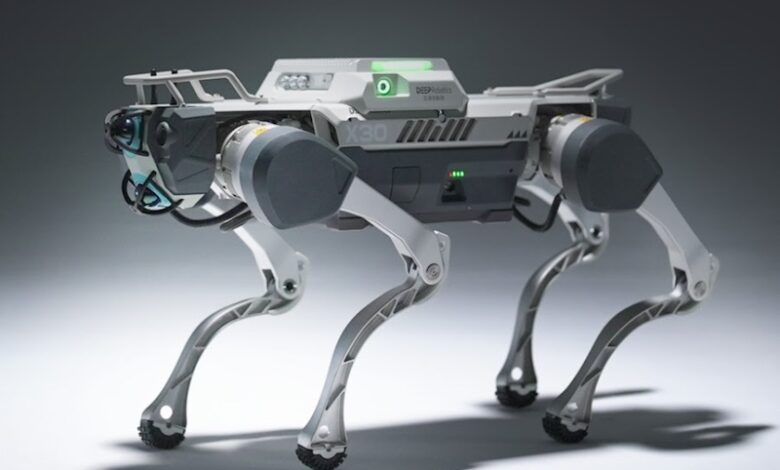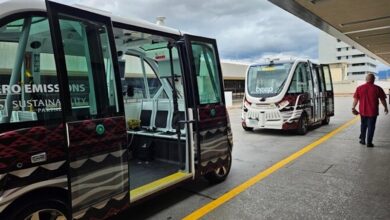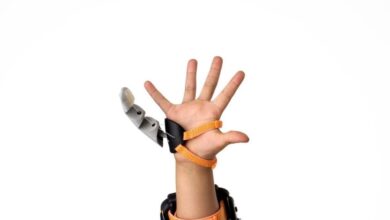Deep Robotics’ quadruped robots making strides in China, Singapore and South Korea – Robotics & Automation News

Deep Robotics has been making great strides with its quadruped robot in China, Singapore and South Korea.
In Singapore, Deep Robotics, in collaboration with its official partner EGP, is participating in the AMR SPPG Tunnel Project of the Singapore Powergrid (SPPG).
This project utilizes quadruped robots for power tunnel inspections and integrates related detection systems to provide early warnings for emergencies.
This marks the first time China-produced quadruped robots have been involved in overseas power industry applications.
The relevant team has conducted extensive training and deployment locally.
Zheng Dongxin, product manager of Deep Robotics, says: “Additionally, in South Korea, a factory production line management project employs Deep Robotics quadruped robots for line meter recognition, tray handling, and component picking.”
Deep Robotics’ industrial-grade quadruped robot has served more than 100 clients in 26 provinces and cities in China including Guangzhou, Beijing, Shanghai, Hebei, Shandong, Zhejiang, Hubei, and Anhui.
Moreover, in countries such as Singapore and South Korea and more, several Deep Robotics industry projects have also been implemented, marking the first overseas industry application of domestically-produced quadruped robots.
During the recent Spring Festival, quadruped robots stood guard at a certain ±800kV converter station in Hunan Province.
Faced with significantly increased pressure on power guarantee during the Spring Festival, it utilized its superior full-process autonomous inspection capabilities and 24-hour all-weather operation capabilities.
Equipped with a dual-light gimbal and a series of equipment modules, it replaced humans in conducting inspections in complex and dangerous industrial environments, helping companies identify potential risks, ensuring the smooth operation of Spring Festival power maintenance, and allowing everyone to celebrate the festival with peace of mind.
In a substation in Anhui, the “robot dog + drone” low-altitude integrated intelligent operation and maintenance inspection was carried out, achieving autonomous inspection, automatic defect identification, timely detection of equipment operation abnormalities, and improving the reliable power supply capacity of the substation.
At a power station in Guangdong, quadruped robots conducted inspections tirelessly against wind and rain. Compared with traditional intelligent robots, its inspection point quantity increased by 60 percent.
Equipped with dual-light gimbal cameras, it can identify 30 types of power equipment defects and read 9 types of meter readings.
Previously, to achieve full coverage of intelligent equipment in substations, at least 9 intelligent robots were required.
Now, with just one quadruped robot, it can be achieved, saving 70 percent of the investment in intelligent operation and maintenance costs.
Unlike drones, quadruped robots have rich external device mounting capabilities. The project team attempted to mount a high-precision force-controlled six-axis mechanical arm on the robot body, enabling it to assist in maintenance, support emergency safety operations, and perform emergency breaker operations with high precision under extreme conditions.
In a 220 kV cable tunnel in Fujian, maintenance personnel used quadruped cable inspection robots to comprehensively diagnose the health of power equipment.
According to media reports, it can timely detect 95 percent of cable line surface defects, overheating faults, and channel fires, significantly improving inspection efficiency.
At the receiving-end station of a ±1100 kV ultra-high voltage direct current transmission line in Anhui, maintenance personnel used quadruped robots and other intelligent devices to conduct inspections to ensure the safe operation of power equipment.
With the help of intelligent AI algorithms, autonomous collection, identification, calculation, and diagnostic analysis of equipment status and other data can be achieved.
In the 8-meter underground power gallery in Hangzhou, since the 19th Asian Games, Deep Robotics’ quadruped robots have been working for more than half a year.
State Grid Zhejiang Electric Power Research Institute, Deep Robotics, MY Software, and other units have collaborated to perceive the environmental conditions such as temperature and humidity, harmful gas concentrations, and smoke density in the gallery through quadruped robots, and real-time monitoring of cable operation indicators such as protective layer circulation, partial discharge, and operating temperature.
With the help of daily intelligent autonomous inspection and weekly intelligent active detection of new equipment, staff only need to inspect once every six months and conduct live measurements once a year, making the work process more streamlined and the inspection results more accurate.
Looking at the world, as the wave of “Robot + AI” sweeps across the globe, global industry giants are also accelerating digitization and preparing for quadruped robot industry application projects.
Whether the application potential of quadruped robots will explode in 2024 remains to be seen, but it is worth looking forward to! Additionally, Deep Robotics (Hall 5 D46-3) is set to participate in the Hannover Messe in Germany from April 22nd to 26th.
At the event, the quadruped robot will make its debut, showcasing its capabilities. Industrial scenes often involve significant dangers and tedious tasks.
Challenges such as stairs, outdoor harsh weather conditions, extreme temperatures, darkness, and other adverse environments hinder traditional robots from entering industrial sites for operations.
However, Deep Robotics’ quadruped robot can effectively address these issues.



